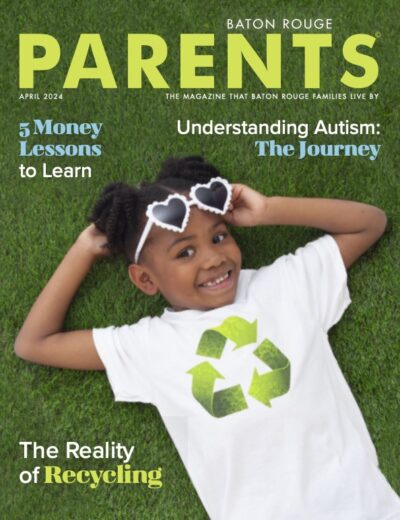
Zebras on the Horizon
In medicine, you are taught to be on the lookout for “zebras in the horse pasture.” In other words, you should always keep in mind that the uncommon or out of place could be sitting right in front of you. My typical day during the winter months often involves many children coming to see me for fever, runny nose, and a cough. While my first thought is that what I’m seeing is probably a common virus like the cold or the flu, it’s always in the back of my mind that there could be a zebra lurking out there that is trying to lose its stripes and become just like one of the other horses in the pasture. Unfortunately, right now, that zebra is the measles virus.
You have likely heard about measles cases that have been identified across the country this year. So far, the Center for Disease Control (CDC) has confirmed that measles cases have been identified in 12 states, including our neighbor to the West, and as of March 7, there have been 228 confirmed cases of measles in the US. To put that number into perspective, in just over two months, we have reached the third highest total for a year since the measles was considered eliminated in the US in 2000! If the number of documented measles cases continue on this pace, we could see well over 1,000 cases during 2019.
Measles, which is a virus, is one of the most contagious diseases known to man. The virus is easily spread through coughing or sneezing, and the virus is able to “hang around” in the environment for about two hours. It is estimated that a person with measles will infect up to 90 percent of those around them who are unvaccinated. While measles generally causes symptoms such as fever, cough, runny nose, red eyes, and a rash that starts on the head and spreads to the entire body, there are serious complications that can occur. Studies indicate that 1 out of 10 children will get an ear infection following measles, 1 out of 20 will suffer with pneumonia (the most common cause of death from measles in young children), 1 out of 1,000 will get encephalitis or swelling of the brain, and one to two out of 1,000 will die from measles.
So why then, you might ask, have people never given a second thought to measles until the past few weeks? As stated previously, it’s because the disease was considered eliminated in this country in 2000. Prior to the introduction of the measles vaccine in 1963, there were between 3-4 million cases of measles each year in this country. Yes…that’s 3-4 MILLION cases, resulting in 400-500 deaths in the US each year! Through a highly successful vaccine campaign, measles was considered eliminated from the US in 2000. This means that there were no native cases of measles that started here in the US. Since 2000, there have been several outbreaks of measles, usually in areas that have low vaccination rates, but these cases have been attributed to people coming to the US from foreign countries with the virus in their systems and then passing it along to those who are unvaccinated.
So why are we seeing this return of a previously eliminated disease? There are a few factors:
- Refusal to vaccinate–In 1998, British physician, Andrew Wakefield, published a study in the Lancet journal falsely declaring that there was a link between the measles, mumps, rubella (MMR) vaccine, and autism. The study included falsified data, invasive and unnecessary tests on children, and ethical violation, including paying lawyers and patients. Because of these grievous misgivings, the Lancet retracted the study in January 2010, and Andrew Wakefield was stripped of his medical license. Exhaustive scientific studies have been done since Mr. Wakefield published his “findings,” looking to see if there is any link, what-so-ever, with the MMR vaccine and autism, and all of these studies have shown no connection. But the damage has been done. The MMR vaccine is given between 12-15 months of age with a second dose between 4-6 years of age. The vaccine is highly effective, protecting greater than 95 percent of people after just one dose.
- Loss of herd immunity–So what exactly is “herd immunity?” This is the concept that if we protect as many people as possible in a community (the “herd”) from an illness through vaccination, then the entire community can be protected from the spread of illnesses. Herd immunity is critical because there are those in a community who cannot be vaccinated for some illnesses–newborns and infants, those that have underlying medical conditions that suppress the immune system, or those that may be on chemotherapy or immunosuppressive medications from a recent organ transplant. For highly contagious diseases, like measles, it is estimated that the herd immunity vaccination rate is 90-95 percent, meaning that 90-95 percent of people in a community need to be vaccinated against the measles to reduce the chance of significant outbreaks. Unfortunately, thanks largely to some parents refusal to vaccinate, there are communities around the US where the measles vaccination rate is falling to an abysmal 81 percent. When the herd is not protected, outbreaks and epidemics follow.
- Interconnected world–Measles is by no means eliminated in other areas of the world, and it is not just third world countries that continue to battle with this disease. The Philippines is suffering from an outright measles epidemic right now as the country has reported over 6,000 measles cases with 70 deaths in the first 44 days of 2019! Many countries in Europe, including the United Kingdom and France, have been struggling with epidemics of measles over the past decade as well. When someone from one of these measles endemic areas comes to the US infected with the measles virus, then they will spread the virus to those around them who are susceptible (this means everyone on the airplane with them, in the airport, on the shuttle bus, etc).
I think there is a degree of complacency that can set in after the elimination of disease. People may think, “Oh, I have never seen measles or heard of anyone who has had that illness. It can’t be that bad.” Unfortunately, this is the price we all pay when scientific research leads to a highly effective vaccine that eliminates something like measles, and then society, over time, simply forgets the effects of the disease and the great effort it took to eliminate it.
What, then, will it take for people to realize how devastating a virus like measles can be? Will it be 1,000 cases documented? Children who are too young to receive the vaccine to start dying from the virus due to the destruction of the “herd immunity” that consistent vaccination creates? I, for one, as a pediatrician hope that the recent outbreaks around the US remind people of the importance of vaccination with two doses of the MMR vaccine. To put it another way, let’s make sure that this zebra keeps it stripes.

The Baton Rouge Clinic, AMC





